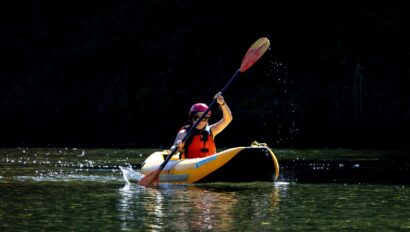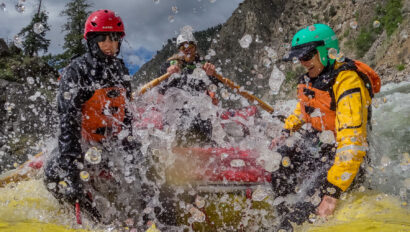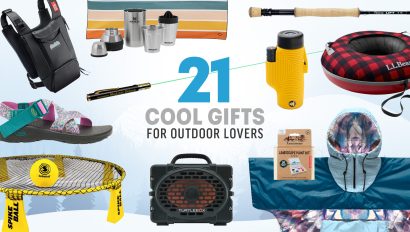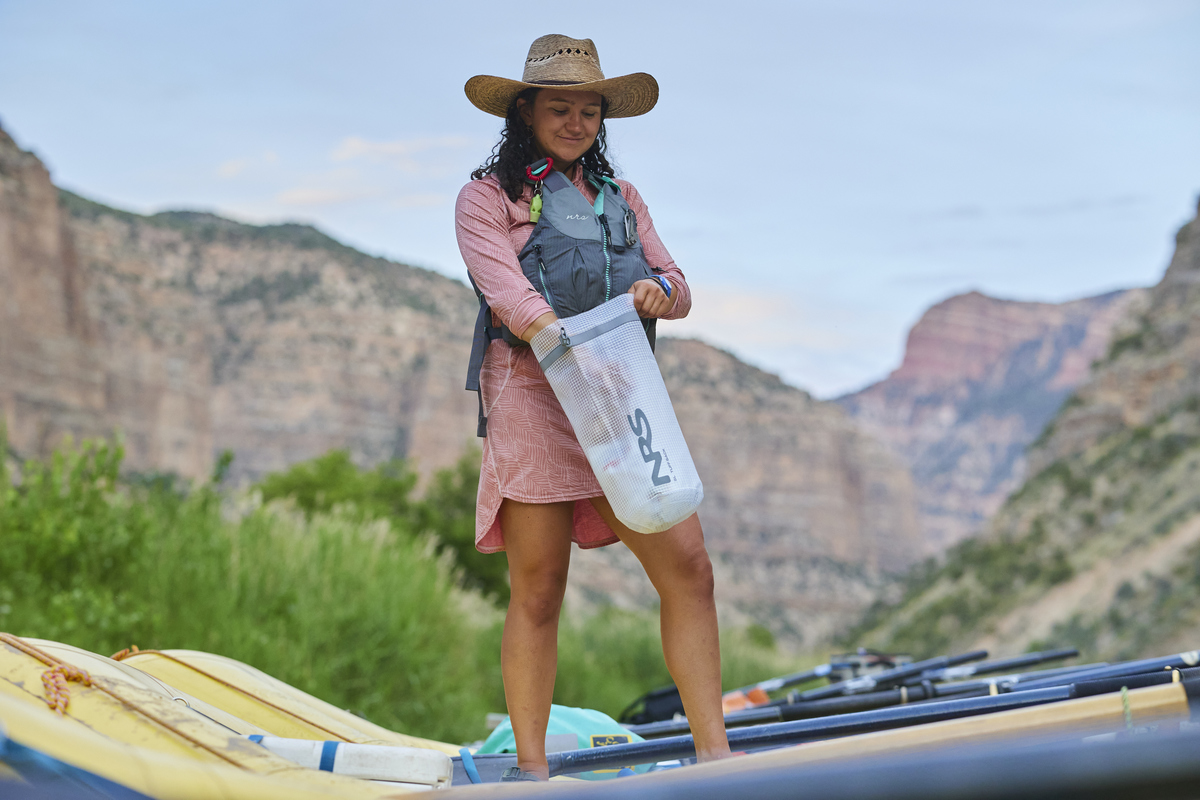

Stay Prepared With a Well-Stocked Day Bag While On the River
Packing a small “carry-on” dry bag with essentials you’ll need during the day on a rafting trip doesn’t have to be a daunting process. A river guide shares some tried and true ideas for what to keep handy on the raft each day until the rest of your gear is accessible later at camp.

Sarong
My girlfriends and I always remind each other to bring a sarong while rafting in the summer. Although you’ll get splashed while paddling through rapids, there will also be flat water sections, and things can dry out and heat up quickly on the boat. If you have a sarong handy, dip it in the water and drape it over your legs or shoulders. It makes for an excellent sun cover, and it is surprisingly effective in cooling you down. As a bonus, you can use it to protect your lower half from the unpleasantness of sitting on a piping-hot raft.
Sunscreen
Having plenty of sunscreen is crucial while on the river. But have you ever noticed how sloppy and slick your hands feel after applying it? For at least 30 minutes after application, I have trouble hanging onto my paddle because my hands feel so slippery. Here enters the sunscreen stick. You can apply it directly to your face and other hot spots you’ll need to touch up regularly (like arms, shoulders, and neck), and it never needs to go onto your hands. Also, consider a good chapstick with SPF. River environments can be harsh, and having dry, chapped lips for the duration of your trip can make you feel miserable. Be sure whatever sunscreen you choose is eco-friendly and safe for the river.
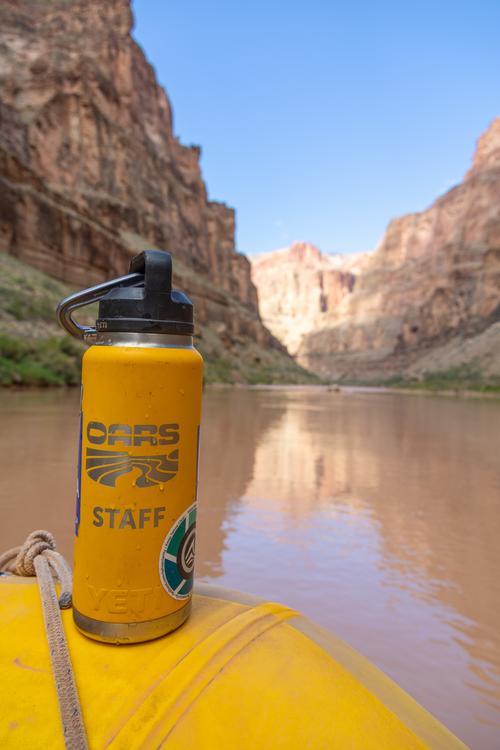
Water Bottle with Locking Carabiner
An easily accessible insulated bottle to store water or an electrolyte beverage should be a top priority item for your river trip. To take it to the next level of accessibility (and to follow best safety practices), slide a locking carabiner onto your water bottle so that it can be easily accessed throughout the day and quickly secured as you drop into rapids. Your guide will love that you thought ahead.
Prescriptions or Necessary Personal Toiletries
From contact lenses to medications to sanitary supplies, it’s always a good idea to keep important personal toiletries nearby and easy to access. While the guides will keep a wag bag handy for those sudden bathroom stops, it’s a good idea to keep any toiletries you require at the ready.
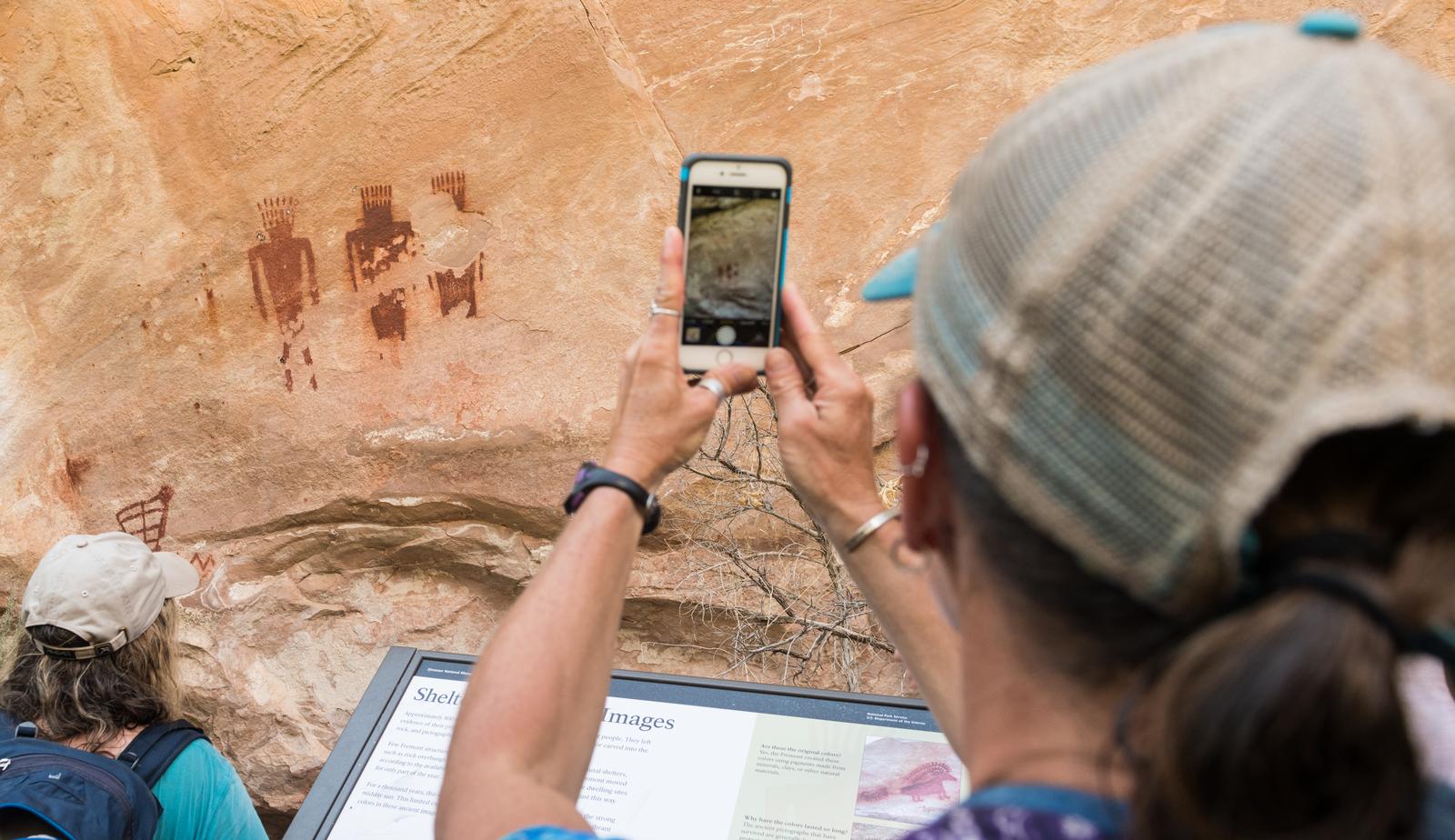
Protection for Your Smartphone
A waterproof phone case and shatter-resistant screen covers are a must if you want to help protect your smartphone on a rafting trip. Although some newer phone models are waterproof, not all are, and a waterproof case can mean the difference between taking your cherished memories home with you or having to replace your device altogether. In addition to your phone, you may want to bring a GoPro or other sports camera to collect footage of your epic journey. For ease of capturing that footage, consider investing in mounting accessories for your provided helmet before your trip.
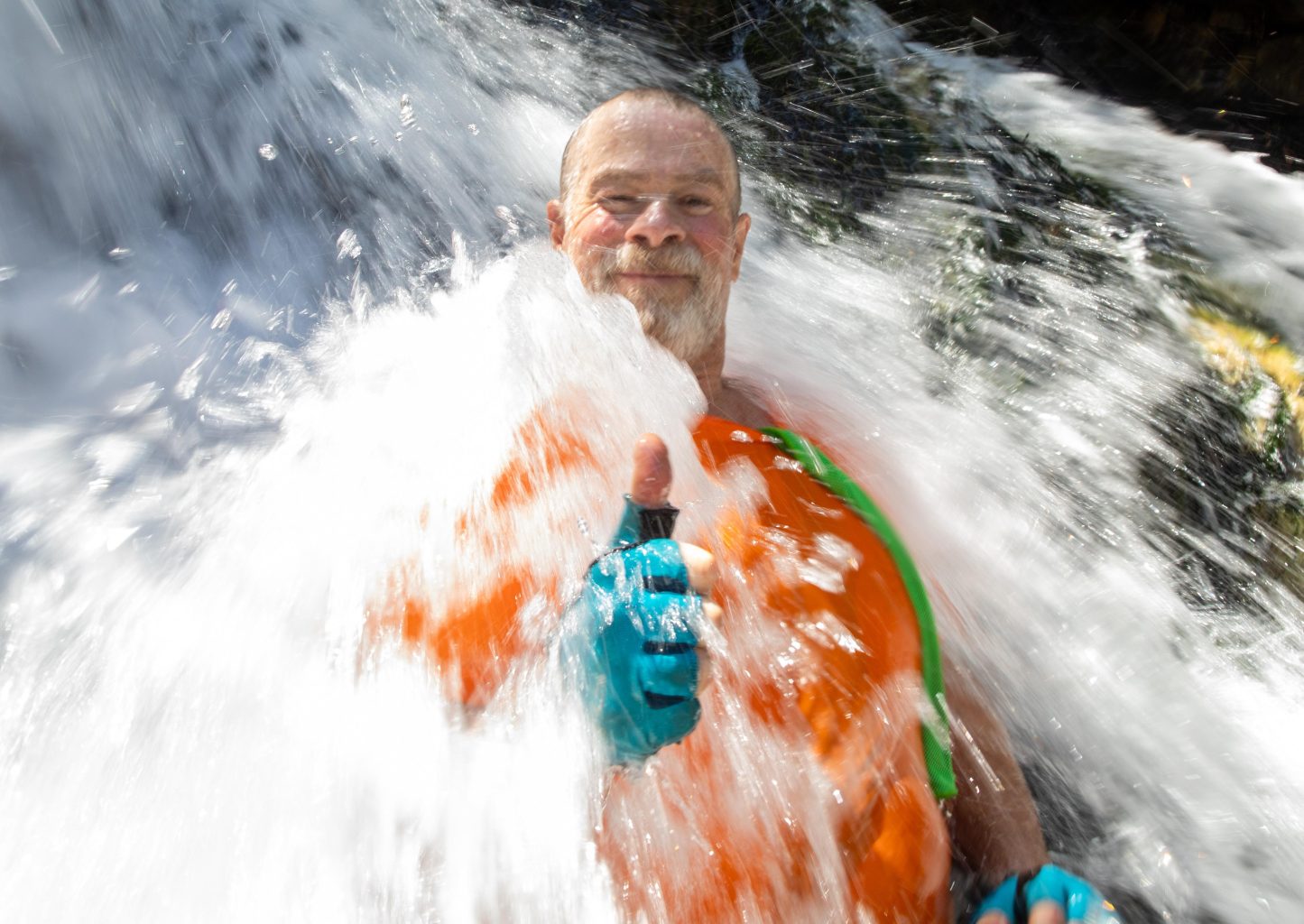
Paddle Gloves
Paddle gloves are designed to have extra padding on hot zones where your hand will hit the T-grip of your paddle with the most force. Wearing gloves can do a lot to prevent blisters and calluses, and even if you think you don’t need them, they are good to carry as a backup. If you start to form blisters and paddling persists, an open sore can develop, and then you’re one step away from an infection that could ruin your dreamy river vacation. This is perhaps one of the most common ways to end up with a preventable open wound on a river trip, and a solid pair of paddle gloves can save you from an unpleasant and painful situation.
Socks
For the same reason it’s good to carry a pair of paddle gloves with you, it’s good to have a pair of quick-dry socks in your day bag, as well. If you feel like you’re starting to get a blister, you can throw them on under your sandals (yes, it’s acceptable) and save yourself from a world of pain. Be sure to take them on hikes with you if you won’t be changing into hiking footwear; even a well-worn-in pair of river shoes can be susceptible to getting grit stuck in the straps, and that can make a short hike feel like forever if you form a blister. Socks are also great for sun protection. It’s not uncommon to forget the tops of your feet when putting on sunscreen, so if you feel like they’re burned or starting to burn, you can protect them from further damage by covering them up entirely. Your feet will thank you.
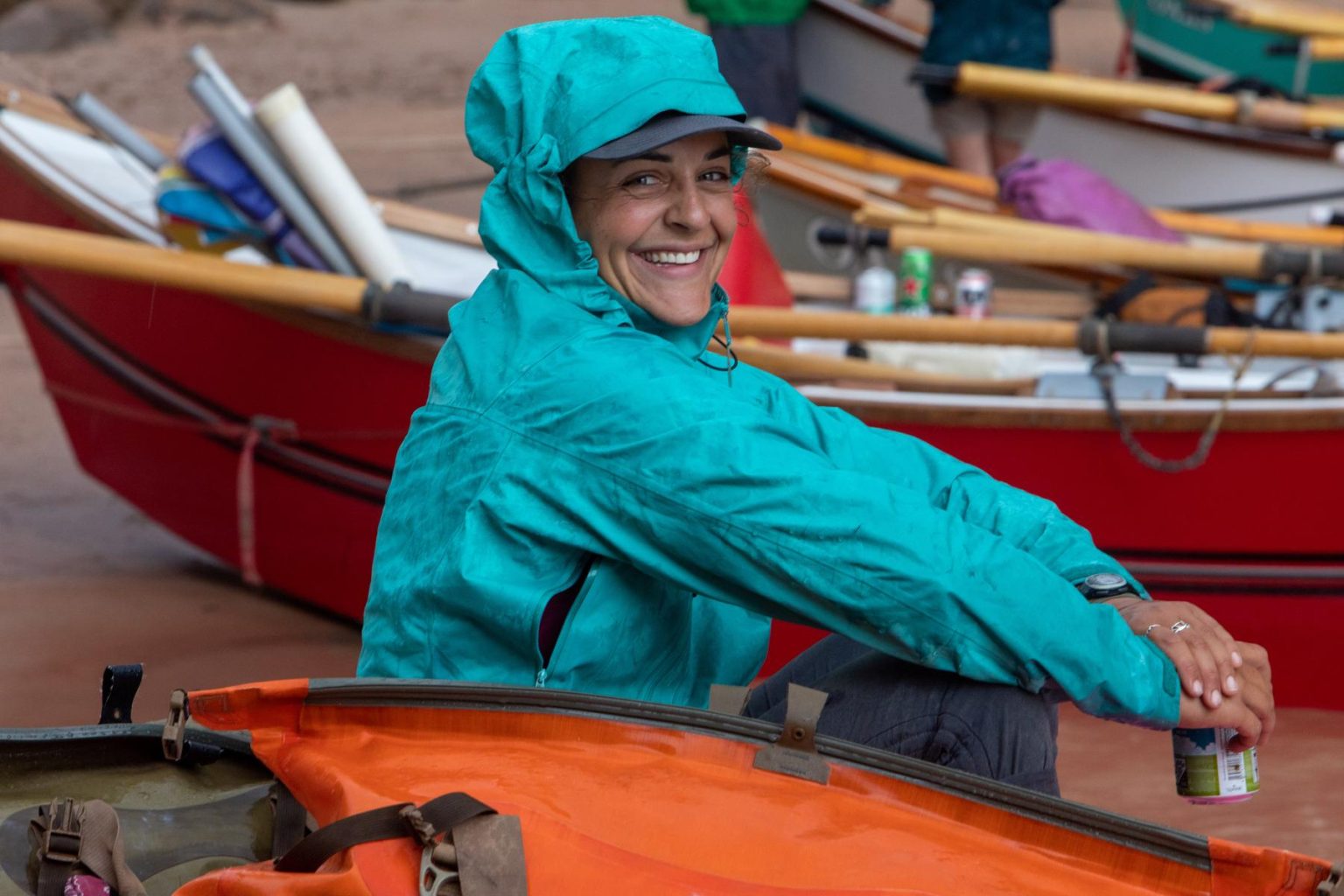
Rain Gear
No matter what river you’re on, what time of year you’re traveling, or what the weather forecast says…always bring rain gear. Unforeseen showers happen on the river all the time, so don’t expect that you’ll never need it if your trip calls for sunny skies and high temperatures. Rain gear doesn’t just protect you from unplanned downpours and windy, overcast days, it can also protect you from cold rapids on trips that don’t include wetsuits, especially in the mornings when the river is still fully shaded, and the sun hasn’t traveled high enough in the sky to truly warm things up at river level. As the day progresses, you can remove your rain gear and store it in your day bag. (Pro tip: Get a stuff sack you can put it in to prevent excess moisture inside your dry bag if it’s still a little damp.)
Hand Sanitizer and Wet Wipes
In this post-Covid era, having wet wipes and hand sanitizer at the ready is one of the best ways to keep yourself and the team of rafters around you healthy while on the river. Before and after the restroom and before and after meals are the key times I use my hand sanitizer. Wet wipes come into play a little more at camp and the groover. What’s nice about wipes is they are easy to pack out and won’t leave any soapy residue in the soil or water. Another way to use wet wipes is on your phone and coffee mug. If you tend to leave your coffee mug around camp or accidentally take it to the groover with you, give it a wipe for good measure. Your rafting cohorts and guides will appreciate your diligence around germ management.
Female Urination Device
For female rafters, a female urination device can make a world of difference in aiding with comfort in an outdoor, toiletless world. Check out PeePod, She-wee, Freshette, Tinkle Belle, and more. While this option isn’t requisite, many female passengers find this gadget helpful and convenient.
Pack Your Small Waterproof Dry Bag for Success
Most people find a small, 15-20L waterproof dry bag is an ideal size to keep essentials accessible on the raft throughout the day. In order for the dry bag to be properly sealed, and actually waterproof, be sure not to overstuff. For best results, you should be able to fold the top of the bag at least three times before latching it closed. Then, strap it to the perimiter line or another piece of webbibg on the boat to keep it secure in whitewater.
Related Posts
Sign up for Our Newsletter

